
History
Started by Professor Sir Dugald Baird in 1950 in collaboration with the MRC Medical Sociology Unit
Data saves lives : How the Aberdeen Maternity and Neonatal Database has been improving our understanding of pregnancy risks for over 75 years.
The Aberdeen Maternity and Neonatal Databank is held on a Microsoft SQL Server within the Directorate of Information Technology. Data analysis is performed using TSQL by the Data Management Team on behalf of the steering group - see Publications .
The database is accessed from the Department of Obstetrics and Gynaecology over the University network via security passwords. It is updated using SIR/FORMS, on a weekly basis, from a separate continuously maintained database, which is functionally equivalent, but holds medical data as free text at the point of data entry. This text is automatically converted to ICD/GRO codes prior to update of the main research database. The database is updated by up to 5 concurrent users, with information relating to approximately 100 births every week.
Information on approximately 200,000 pregnancies/deliveries is held on the research database amounting to half a Gigabyte of storage across 45 record types, 4 of which are mandatory and contain data for the patient, pregnancy, delivery and baby and a further 40 optional record types used for clinical details, test results and grouping of complete reproductive histories for individual women and families spanning three generations. These records are detailed in the Contents section.
The Aberdeen Maternity and Neonatal Databank was initiated in the Department of Obstetrics and Gynaecology by the late Professor Sir Dugald Baird, in 1950, in collaboration with the Medical Research Council (MRC) Medical Sociology Unit, as a resource for the study of physiology, pathology and sociology of pregnancy. From 1951 to 2017 this unique database links all the obstetric and fertility-related events occurring to women from a defined population.
Initially the data was held on punched cards, but by 1986 it was redeveloped onto a SIR database. This database now holds data for all Aberdeen City births from 1949 to 2017, with the MRC Medical Sociology Unit retaining responsibility for data relating to the period 1949 to1983 inclusive and the University of Aberdeen maintaining and controlling the data thereafter.
The Databank has been used for a number of research related projects - ranging from epidemiological studies within Aberdeen to collaborative work with other units world-wide, where anonymous extracts of the data are provided.
The Databank has a number of unique and special features which make it a particularly valuable resource for research purposes:
All reproductive events to women resident in a defined geographical area with a relatively stable population are included.
A recent tracing exercise using the Community Health Index (CHI) register in Scotland revealed that only 3.8% of those who gave birth in Aberdeen Maternity Hospital and consequently had a record in the AMND had migrated out of this geographical region.All obstetric and fertility related gynaecological events, e.g., sterilisation, early pregnancies etc. are included in the Databank. This feature greatly enhances the quality of epidemiological and demographic data.
The original Maternity case records are available for the whole period. Additional data items can thus be added to the Databank for selected cases and validity of data can be checked systematically.
Data collection has been continuous since 1950 and is ongoing, allowing study of secular change, and identification of considerable numbers of intergenerational, sibling and twin pairs for the study of genetic and environmental influences upon reproductive performance.
Stringent and consistent criteria have been used for the coding of gestation length, birthweight, pregnancy complications and cause of perinatal death by trained coding staff. When metrication was introduced for recording of height, birthweight etc., the earlier records were all converted.
Zygosity has been determined for the majority of twin pairs from 1968 onwards. This is also available for surviving twins born between 1960 and 1964.
Computerisation allows relatively easy identification of complete reproductive histories not only of individual women but also of families. Using this information intergenerational analysis can be performed.
An unusual amount of social data is available for most years including occupational for women, husbands or partners, grandfathers, duration of education and lifestyle factors such as smoking.
For more information on what is held in the AMND, visit our content page .
It is virtually impossible to list all the variables that are recorded in a large database such as the AMND. A selection of commonly requested variables is given below. If a particular variable is required but does not appear below, it is best to ask - chances are it will be there (at least for some of the years!)
*indicates mandatory records
In addition, there are some other variables available for some of the time period and for selected patients. These include:
The completeness of data entry is checked at the end of each year with the NHS returns. There are several validity checks incorporated within the database to ensure against invalid data entry. The accuracy of data entry is checked regularly for subsets of records using case note reviews.
A Steering Committee is responsible for the future preservation of the access to the Aberdeen Maternity and Neonatal Databank with data from 1949 onwards.
The MRC Medical Sociology Unit collaborated in and has a responsibility for the Databank up to and including data for 1983 only.
To download a
Databank request application form click on the link.
All enquiries and completed request forms should be addressed to:
Heather Clark
Databank Administrator, University of Aberdeen
Email: amnd@abdn.ac.uk
The AMND has grown considerably since our last annual report in 2002. As of September 2015, we now have data on:
Here we present some time trends derived from data from the AMND.
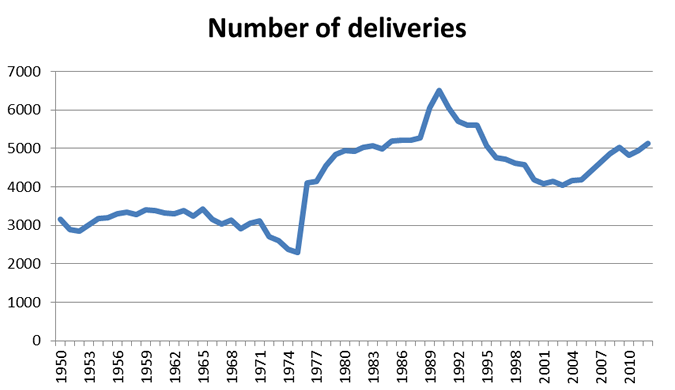
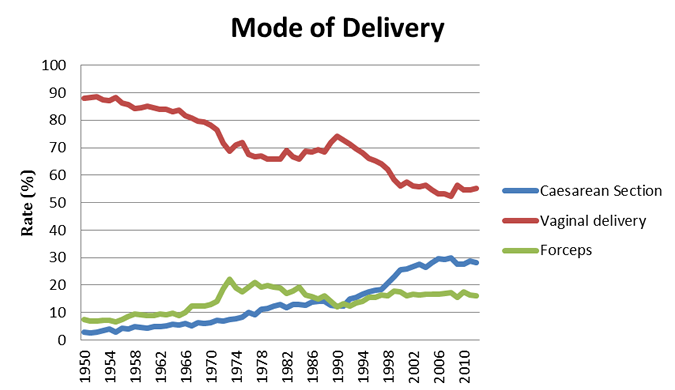
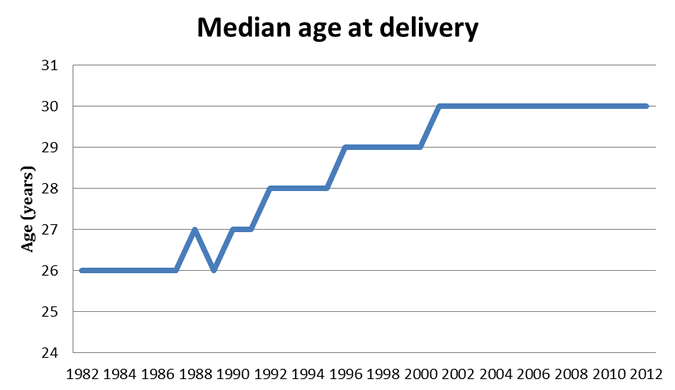
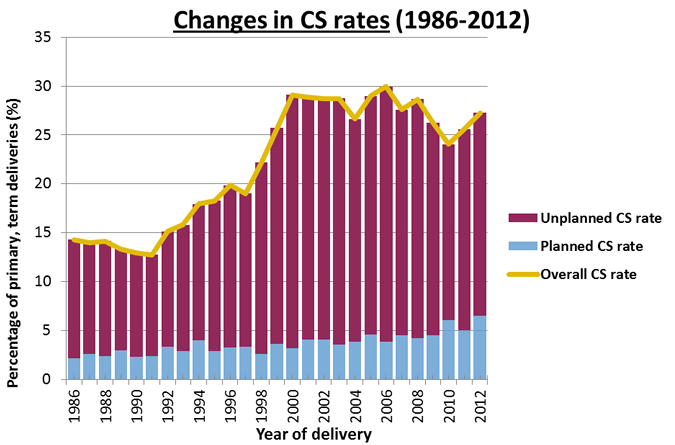
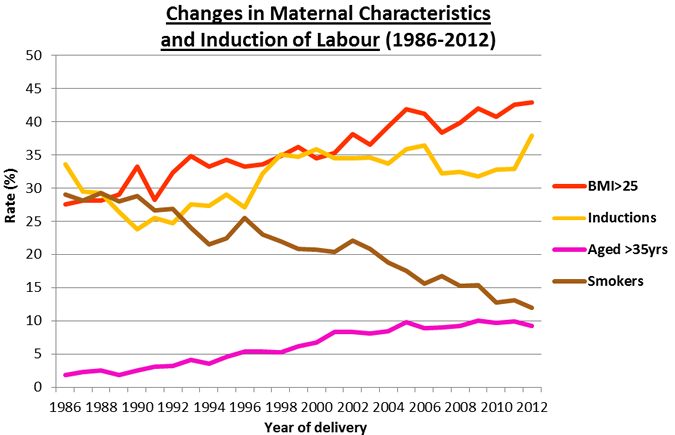
Trend of teenage conceptions and the rate ratio of teenage pregnancy in women who are either in the most deprived Carstairs category or the unskilled occupational social class category (McCall et al., 2014).
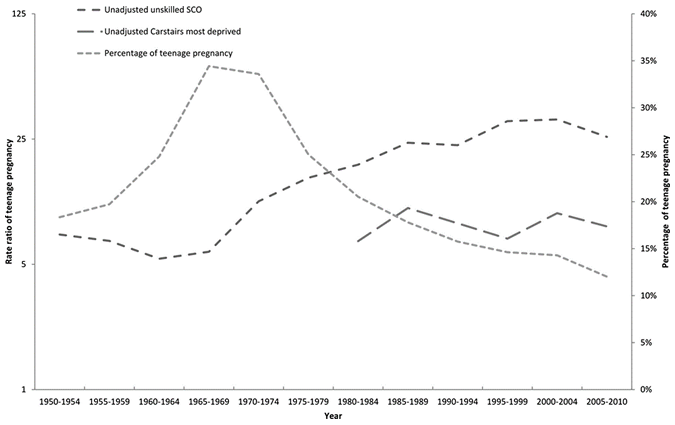
The AMND Steering Committee was set up to be responsible for the future preservation of the access to the Aberdeen Maternity and Neonatal Databank with data from 1949 onwards. The MRC Medical Sociology Unit collaborated in and has a responsibility for the Databank up to and including data for 1983 only.
The organisations involved in the preparation, processing and access of the data are represented on the Committee as follows:
Terms of Reference, AMND Steering Committee
Aberdeen Maternity Neonatal Databank
Aberdeen Centre for Women's Health Research
Institute of Applied Health Sciences
University of Aberdeen
Cornhill Road
Aberdeen
AB25 2ZL
Tel: +44 (0)1224 437288
Email: amnd@abdn.ac.uk